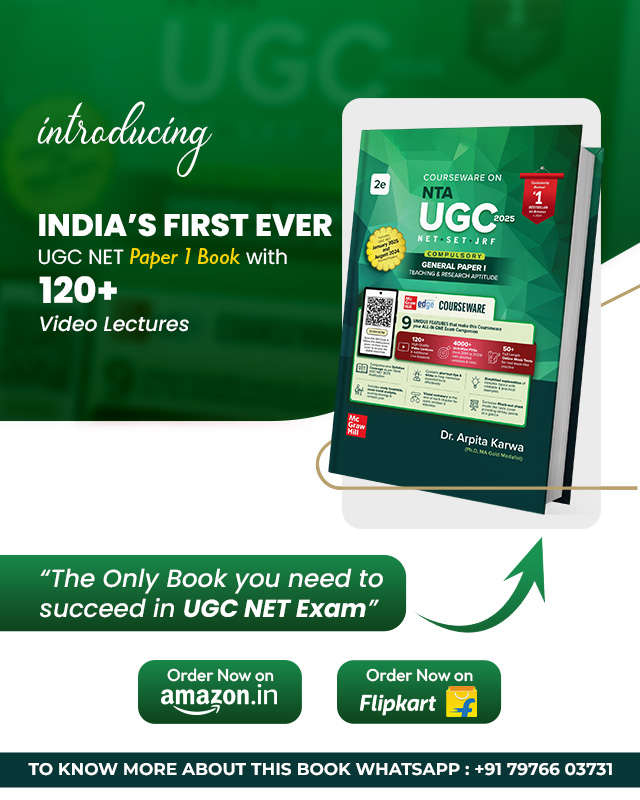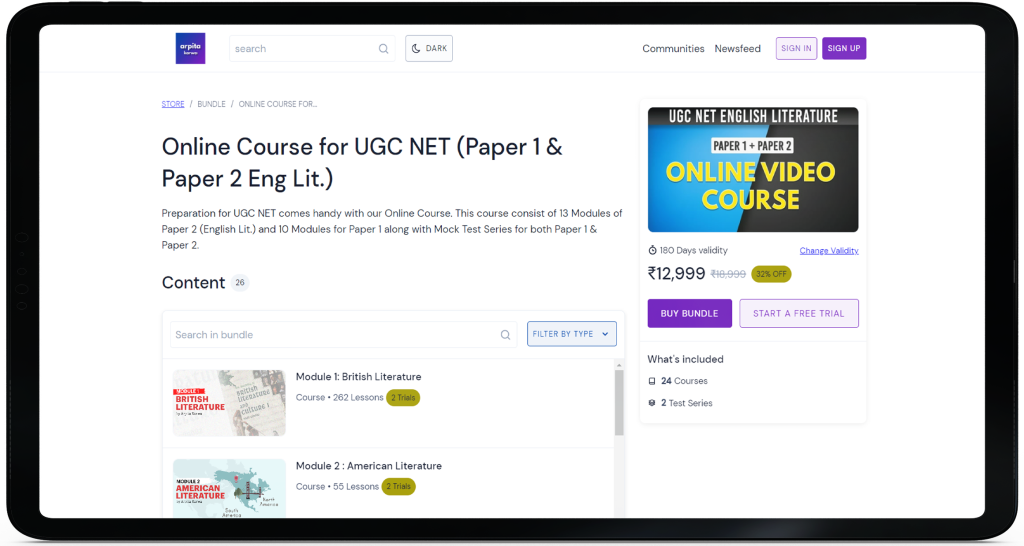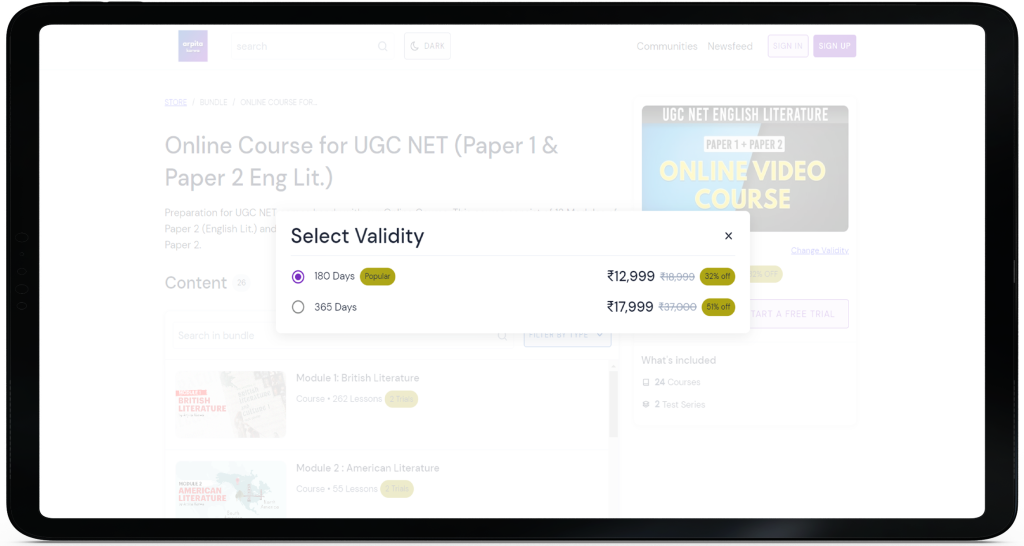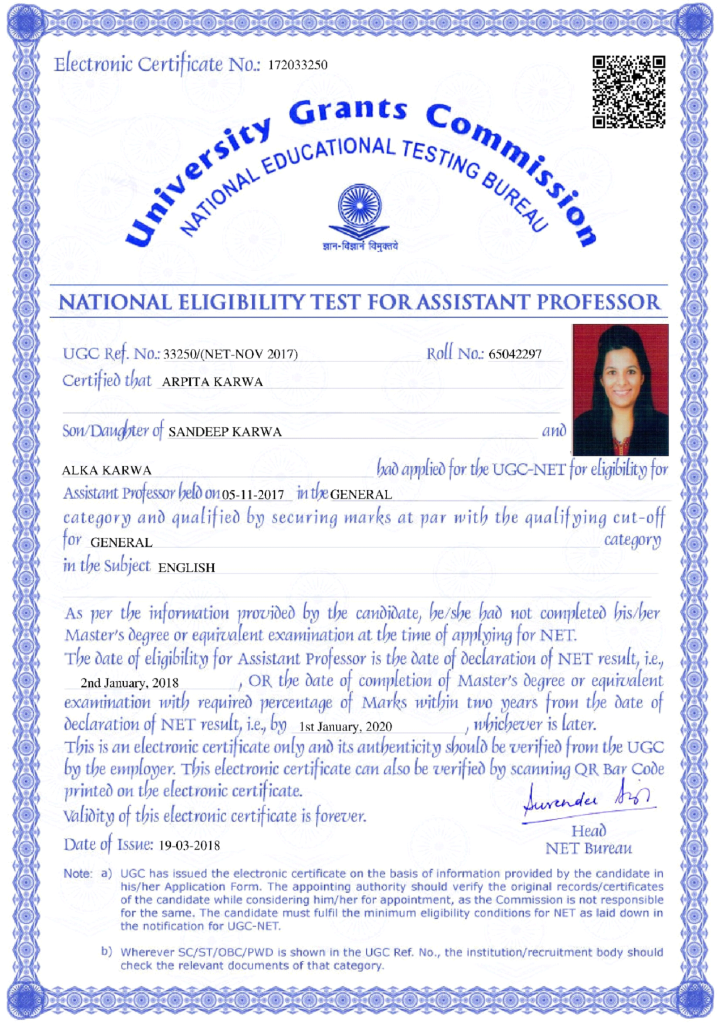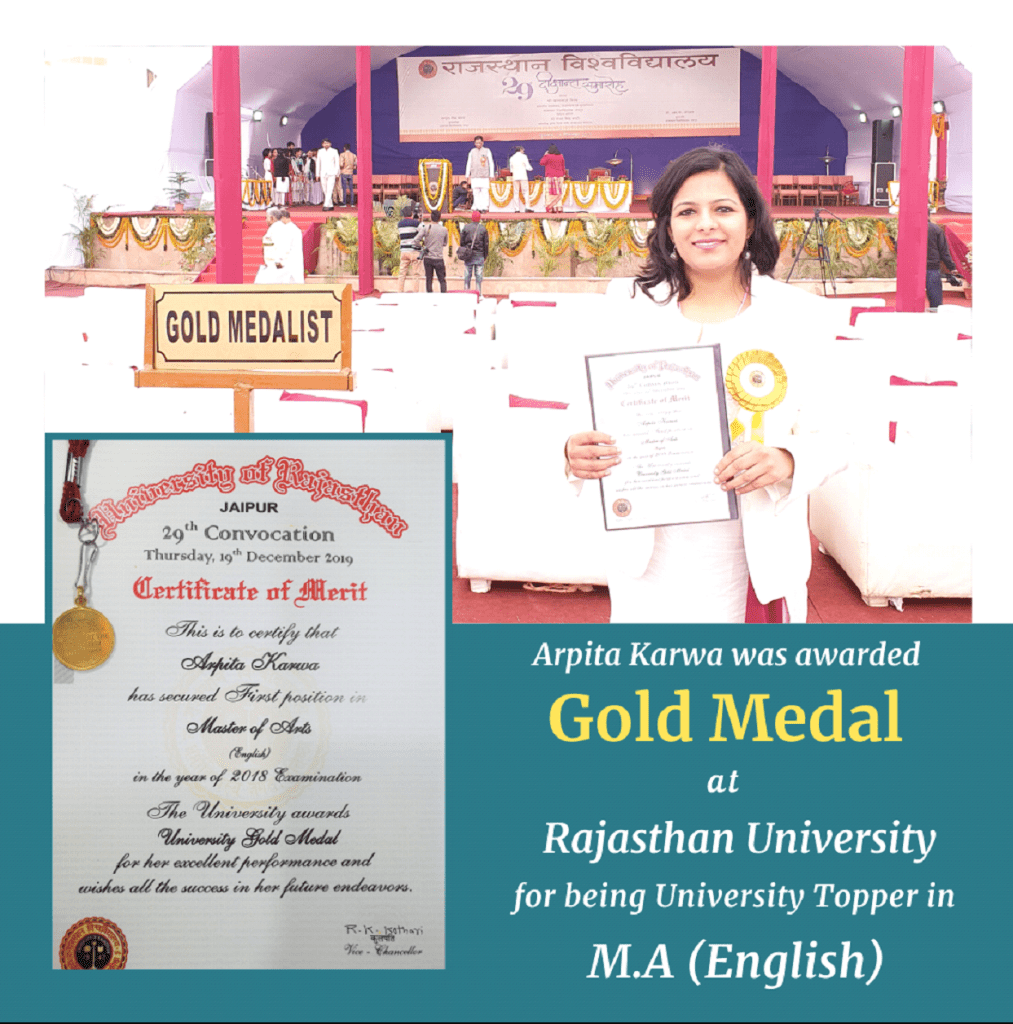Gujarat Set 1
June 20, 2023 2023-12-18 15:51Gujarat Set 1
Gujarat Set 1
Q.1) Which character embodies in himself the characteristics of an ideal Renaissance person, a conventional malcontent, a traditional avenger and a sensitive idealist?
(A) Antony
(B) Hamlet
(C) Othello
(D) Richard III
Q.2) Which of the following Marlow Ian protagonists can be called a “Machiavellian” man?
(A) Tamburlaine
(B) Dr. Faustus
(C) Barabas
(D) Edward
Q.3) Which of the following is not a characteristic quality of the Restoration Drama?
(A) The amoral wit
(B) Stylized hedonism
(C) Metropolitan
(D) Licentiousness
Q.4) What was introduced in the plays by George Bernard Shaw?
(A) Poetic quality
(B) Anti-Romanticism
(C) Witty dialogues on contemporary reality
(D) The discussions into drama
Q.5) Arrange the following plays of W B. Yeats chronologically:
(1) The Resurrection
(2) The countess Cathleen
(3) The Death of Cuchulain
(4) Calvary
Codes:
(A). (2, 4, 3, 1)
(B). (2, 4, 1, 3)
(C). (2, 1, 3, 4)
(D). (2, 3, 1, 4)
Q.6) Which of the following plays represents actionless naturalism, deliberately vague symbolism and apparently aimless and aggressively colloquial dialogues?
(A) Look Back in Anger
(B) The Caretaker
(C) The Birthday Party
(D) The Entertainer
Q.7) Match ‘The Plays in the table A with The Sources in the table B correctly:
The Plays
(1) Tughlaq
(2) Yayati
(3) Hayavadana
(4) Naga-Mandala
The Sources
(a) The Mahabharata
(b) History
(c) Folk Literature
(d) Kathasaritsagar
Codes:
A. (1)-a, (2)-c, (3)-b, (4)-d
B. (1)-b, (2)-a, (3)-d, (4)-c
C. (1)-b, (2)-a, (3)-c, (4)-d
D. (1)-b, (2)-c, (3)-a, (4)-d
Q.8) Which playwright has dealt with the issues like homosexuality, child-sexual abuse, gender discrimination and communalism etc.?
(A) Girish Karnad
(B) Mahesh Dattani
(C) Kiran Nagarkar
(D) Shiv K Kumar
Q.9) Which of the following is play by Wole Soyinka?
(A) The Lion and the Jewel
(B) Too Early for Birds
(C) The Road to Mecca
(D) Anowa
Q.10) Death of a Salesman is written by the American playwright
(A) Eugene O’Neill
(B) Tennessee Williams
(C) Arthur Miller
(D) Edward Albee
Q.11) Which poem shows a remarkable synthesis of chivalric, patriotic. Christian and Platonic, of medieval and protestant, of courtly love and Christian marriage, of Italian Romance and medieval allegory and of pageantry and philosophy?
(A) Canterbury Tales
(B) The Faerie Queene
(C) Samson Agonistes
(D) The Rape of the Lock
Q.12) Which of the following poems is NOT from John Donne’s Holy Sonnets?
(A) “Batter My Heart”
(B) “Death Be not Proud”
(C) “What if this present were the World’s Last Night”
(D) “Let Man’s Soul be a Sphere”
Q.13) P.B. Shelley’s The Cener does not concem itself with:
(A) Incestuous lust of the father
(B) Violence
(C) Cruelty
(D) Romantic love
Q.14) The lines “The sea is calm to-night/The tide is full, the moon lies fair/Upon the strengths”: are from the well-known poem by
(A) S.T. Coleridge
(B) Matthew Arnold
(C) Lord Tennyson
(D) George Meredith
Q.15) The obscurity in the poem The Waste Land is not because of:
(A) The weaving of the themes of barrenness, decay and death
(B) The mingling of the Christian story with the Buddhist and other Oriental analogies
(C) The dystopian vision of Eliot
(D) The projection of a broad view of civilization and history as well as human failure
Q.16) John Betjeman uses the traditional verse forms to pinpoint the details of the life of:
(A) The working class of the English society.
(B) The English elite class before World War II
(C) The English bourgeoisie before World War II
(D) The English bourgeoisie after World War II
Q.17) Which of the following poets is associated with Jejuri ?
(A) A. K. Ramanujan
(B) Kamala Das
(C) Arun Kolatkar
(D) A. K. Mehrotra
Q.18) Who is considered to be the father of Modern Indian English poetry by a majority of critics?
(A) Jayanta Mahapatra
(C) Keki Daruwalla
(B) A. K. Ramanujan
(D) Nissim Ezekiel
Q.19) Match the names of the poets given in the table-A with their poems in table-B correctly:
A
(1) A. K. Ramanujan
(2) Keki Daruwalla
(3) Kamala Das
(4) Nissim Ezekiel
B
(a) “Goodbye Party for Miss Pushpa T.S.”
(b) “On the Death of a Poem”
(c) “Migrations”
(d) “My Grandmother’s House”
Codes:
A. (1)-b, (2)-c, (3)-d, (4)-a
B. (1)-b, (2)-d, (3)-c, (4)-a
C. (1)-d, (2)-b, (3)-c, (4)-a
D. (1)-c, (2)-d, (3)-b, (4)-a
Q.20) The epic. Meghanad Badh Kavya, is written by:
(A) Toru Dutt
(B) Michael Madhusudan
(C) Sri Aurobindo
(D) Henry Derozio
Q.21) Match the following:
(1) Arcadia
(2) Pilgrim’s Progress
(3) Tristram Shandy
(4) The Mysteries of Udolpho The correctly matched unit, according to the code!
(a) Gothic Novel
(b) boldly experimental fiction
(c) Allegorical novel
(d) Pastoral narrative
Codes:
A. (1)-c, (2)-d, (3)-a, (4)-b
B. (1)-d, (2)-a, (3)-c, (4)-b
C. (1)-d, (2)-c, (3)-b, (4)-a
D. (1)-b, (2)-d, (3)-a, (4)-c
Q.22) Shyam Selvadurai’s main character in his novel Funny Buy is “funny” for the following reason (Choose the correct option)
(A). The adjective “funny” is ironic because back home, his grandfather mistakes the youngnarrator to be a woman,
(B). The main character plays feminine roles, while no punitive action is taken against the girl who tells on him to adults, in spite of the fact that her behaviour is masculine.
(C) Localized moments of funny, magical descriptions characterize the scenes where the main character appears and this suggests homosexuality in Sri Lankan society
(D). Heterosexual unions in Selvadural’s novel are represented as potentiality dysfunctional. and friendships between the “boy” and “girl’ are rather funny
Q.23) Kiran Desai’s Inheritance of Loss juxtaposes three types of space. They are:
(A) Domestic space, public space, the in-between personal space
(B) The colonial space of the past, the nationalist space of the future, the American of the present
(C). The space afforded by historical negotiation, the space opened up by contemporary politics, the space that neither history nor politics has yet noticed
(D) The earth, the sky and the abyss as the characters invoke in the story
Q.24) Which of the following would you call a ‘dystopian novel”?
(A) The Road to Wigan Pier
(B) A Portrait of the Artist as a Young Man
(C) The Hobbit
(D) Brave New World
Q.25) Which of the following titles by Gertrude Stein is influenced by Cubism?
(A) Tender Buttons
(B) Three Lives
(C) The Autobiography of Alice B. Toklas
(D) Making of the Americans
Q.26) The early form of the short story, from which the printed stories derived, was the
(A) Fable
(B) Parable
(C) Tale
(D) Koan
Q.27) Which of the following story by Edgar Allan Poe is set against the Venetian camival and tells the story of a man buried alive within the brick wall?
(A) The Masque of the Red Death”
(B) The Mystery of Marie Roger”
(C) William Wilson”
(D) “The Cask of Amontillado”
Q.28) Who is the eponymous character in Somerset Maugham’s “The Verger? What does he do?
(A) Frank Eddie; runs a clothes-store in London
(B) Albert Foreman, caretaker of St. Peter’s church in London
(C) Noah Stetson; an office assistant working in a bank
(D) Joe Murphy, a small-time trader and double-dealer
Q.29) The main character in RK Narayan’s short story. “A Horse and Two Goats” is a person called
(A) Nani
(B) Muni
(C) Chunni
(D) Chinni
Q.30) What imparts a weird quality to the setting of The Hound of the Baskervilles” is.
(A) The mad traffic sirens heard in the background of Dartmoor streets
(B) The mad rush-hour on the Dartmoor streets
(C) The sickly pale visages of the crowd overflowing the Dartmoorbriedges
(D) The fog over Dartmoor that no reader can miss visualizing
Q.31) Which of the following is NOT a work by William Hazlitt”
(A). Lectures on the English Comic Writers
(B). The Spirit of the Age
(C) Lectures on English Poets
(D) Moral Essays
Q.32) EM. Foster’s reflections on his association with India and the Indian appear in a collection essay called….
(A) Abinger Harvest
(B) The Common Reader
(C) Enter Conversing
(D) India. Again!
Q.33) A distinguished writer of essays. Charles Lamb also wrote the following with his sister:
(A) Of Age and Innocence
(B) Tales from Shakespeare
(C) Walking Tours and Other Essays
(D) Enter Conversing
Q.34) Identify the distinguished work of the Enlightenment noted for its antagonisin to Christianity which created a new narrative for historians in the world.
(A) A Mosque of Mercy
(B) The Decline and Fall of the Roman Empire
(C) Heroes and Hero Worship
(D) Anatomy of Melancholy
Q.35) Who, among the following, is well-known for the celebrated autobiography, Confessions of an English Opium Eater (1821)?
(A) Edmund Burke
(B) William Godwin
(C) S.T. Coleridge
(D) Thomas De Quincey
Q.36) Which of the statements on Joseph Addison’s journalism is NOT true?
(A) Addison defended the Whigs in the weekly. The Examiner (1710).
(B) Addison wrote a series of sarcastic pamphlets called Drupier’s Letters (1724)
(C) Addison contributed to Richard Steele’s Tatler (1709-11)
(D) Addison collaborated with Richard Steele on The Spectator (1711-12)
Q.37) John Henry Newman’s Apologia pro Vila Sua (1864) is an autobiography. Its title translates
(A) Defense of his Life (
(B) Apologies for his Life
(C) For the life of one’s Mind
(D) All for my Life
Q.38) Dr. Johnson’s Lives of Poets is a famous for the critical biography of famous English poets Identify from the following the poet whose life does not appear in this collection
(A) John Milton
(B) Alexander Pope
(D) William Wordsworth
(C) Thomas Gray
Q.39) A highly artificial but influential style called Euphuism is derived from…………
(A) Daniel Defoe’s an Essay upon Projects
(B) John Lyly’s Hero of his Pruse Romances
(C) Joseph Addison’s Spectator Papers
(D). Robert Burton’s Anatomy of Melancholy
Q.40) Which of the following would you describe as a sociological enquiry that attempted to comprehend and then regulate Victorian society that had been transformed by vast economic changes?
(A) The Decline and Fall of the Roman Empire
(B) The Heart of Midlothian
(C) London Labour and the London Poor
(D) The Origin of Species
Q.41) Which approach is an outcome of the experiments carried out in language teaching in the army campus during World War 11?
(A) The Structural Approach
(B) The Communicative Approach
(C) The Notional Functional Approach
(D) The Humanistic Approach
Q.42) The description of systems and patterns of speech sounds in a language is called………..
(A) Phonology
(B) Phonemes
(C) Phones
(D) Phonetics
Q.43) The “comprehensible input of Krashen implies that sufficient quantity of condition for process of acquisition to take place
(A) Exposure
(B) Expertise
(C) Experience
(D) Experiment
Q.44) ………….. were the two languages from which English borrowed during the Middle English period.
(A) Celtic and Old Norse
(B) Latin and French
(C) Greek and Celtic
(D) Spanish and German
Q.45) Which coherent theory of language learning was based mainly on the work of Pavlov and Skinner?
(A) Behaviourism
(B) Humanism
(C) Cognitivism
(D) Constructivism
Q.46) A term that is used in a general and technical sense for a contact language which draws on elements from two or more languages is called
(A) Creole
(B) Pidgin
(C) Dialect
(D) Register
Q.47) Who evolved the silent way, a language-teaching method by proposing that “teaching must be subordinate to learning”?
(A) Leonard Bloomfield
(B) Noam Chomsky
(C) James Cummins
(D) Caleb Gattegno
Q.48) ……………..is a written or spoken text produced to be read heard by proficient language users and not altered in any way to aid language learning.
(A) An Authentic Text
(B) A Graded Text
(C) A Leaming Text
(D) An Accurate Text
Q.49) Who argues that “the elitist status of English in India creates problems for the economic development because that means that the education of the mass of people will be ignored”
(A) Braj Kachru
(B) N.S. Prabhu
(C) A. K. Srivastava
(D) Mark Tully
Q.50) Who is the author of the book Research Methods in Language Learning which was published in 1992?
(A) David Nunan
(B) Noam Chomsky
(C) George Yule
(D) Tom MacArthur
Q.51) What was the gist of the Saddler Commission Report of 1872?
(A) By and large, education in the bhashas is good for Indian Students
(B) There is something unsound in a system of education which leaves young leamers unable to use their own bhashas
(C) English alone is wholly suited for the development of Indians and their Education
(D) Nothing will equal English in modernizing the Indians in future.
Q.52) Who among the following wrote, “Observations on the State of Society among the Asiatic subjects of Great Britain”
(A) Charles Grant
(B) H.T. Prinsep
(C) Lord Ripon
(D) T.B. Macaulay
Q53) Why was the Kunzru Committee appointed by the UGC in 1957?
(A) To study the teaching of regional languages and English in India.
(B) To report on the question of North Indian languages in school instruction
(C) To report on the question of medium of instruction and the teaching of English
(D) To study the background and training of English teachers in colleges and universities
Q.54) Ram Mohan Roy’s “Letter to Lord Amherst” was the first ever to appeal for
(A) The teaching of English and European Science in India
(B) The introduction of minority languages for Muslims and Sikhs in India
(C) The establishment of Universities in the three Presidencies in India
(D) The teaching of Latin and Greek in Indian Schools and Colleges
Q.55) What is the significance of Wood’s Dispatch of 1854?
(A) It made for the emergence of the Babu class in India.
(B) It outlined the British government’s agenda for a comprehensive education policy for India.
(C) It recommended the introduction of Urdu and Indian languages in the school curriculum.
(D) It emphasized the need for encouraging children’s natural biases and interest in education.
Q.56) Who, among the following, has observed that the English language classroom constitutes an important political site for initiating insurgent knowledge
(A) G.C. Aniche
(B) L. Bloomfield
(C) A. Pennycook
(D) W. Bright
Q.57) Who, among the following, describes the education of Indians in English as “a mask of conquest”
(A) Gayatri Spivak
(B) Meenakshi Mukherjee
(C) Anita Desai
(D) Gauri Viswanathan
Q.58) Match the following
List I
(1) Linguistic Imperialism
(2) Filtration Theory
(3) Butler English
(4) The anxiety of Endianness
List II
(a) Meenakshi Mukherjee
(b) Robert Phillipson
(c) Priya Hosali
(d) T.B. Macualay
Codes:
A. (1)-d, (2)-a, (3)-c, (4)-b
B. (1)-c, (2)-b, (3)-a, (4)-d
C. (1)-a, (2)-c, (3)-b, (4)-d
D. (1)-b, (2)-d, (3)-c, (4)-a
Q.59) What do we understand when we say that English affords “social mobility in India”?
(A) English will afford societies to prosper, and indirectly help people to prosper in mobility.
(B) English is seen as an important and efficient access route to the middle classes and geographical mobility in India.
(C) “Social mobility” depends upon the language competence of its users throughout the world
(D) “Social mobility is an attribute language teachers canvass for English no matter where they teach the subject.
Q.60) Who were the “Anglicists in the debate on the subject of English education in the 19 century India?
(A) Those who were scholars of English
(B) Those who swore by English education
(C) Those who wanted to learn English
(D) Those who opposed Orientalist discourse
Q.61) Which of the following is the most appropriate, and therefore the most widely studied, by Cultural Studies?
(A) Everyday Life
(B). Historical events
(C) Trade and business
(D) Literary transactions
Q.62) Who are the Luddites and what were they against?
(A) Those in society who affect fashion and laugh at religious people
(B) Those who hate all machinery and mechanism
(C) Those who suspect that the exiles and émigrés destroy society
(D) Those who love literature but hate all other arts
Q.63) The process, or a set of processes, through which an individual first fashions and then declares her/his identity to the world is called..
(A) Self-making
(B) Self-engendering
(C) Self-fashioning
(D) Self-regulation
Q.64) The spectacle of the mall had its origins in the visual culture of the panoramas of the nineteenth century. Name the theorist who proposed this idea
(A) Rita Felski
(B) Roland Barthes
(C) Peter Gibian
(D) John Frow
Q.65) Which British theorist proposed the idea of “lived cultures”, a foundation for most culture theorists?
(A) Matthew Arnold
(B) Raymond Williams
(C) Richard Hoggart
(D). Denys Thompson
Q.66) With which socio-cultural theorist do we associate terms such as “taste” and “distinction”
(A) C. Wright Mills
(B) Talcott Parsons
(C) Arjun Appadurai
(D) Pierre Bourdieu
Q.67) To which prominent literary traditions of India is Folklore close?
(A) Secular Scriptures
(B) Bhakti
(C) Vedantic
(D) Life of saints
Q.68) To which celebrated anthropologist of culture do we owe the following: “In a civilization. there is a great tradition of the reflective few and there is a little tradition of the largely unreflective many?”
(A) Milton Singer
(B) R.G. Collingwood
(C) J. F. Stall
(D) Robert Redfield
Q.69) When we say that, like many other items in cultural exchange, folklore items are “autotelic” what we mean is that
(A) They travel by themselves
(B) They are exchanged automatically
(C) They are transferred by People
(D) They move places without our knowledge
Q.70) In cultural studies we discuss “the culture of consumption”. How do we describe the phenomenon?
(A) A complex negotiation between the discourse generated by brands
(B) A complex negotiation between the languages of politics and power
(C) A dialogue between decent und indecent desires of the public
(D) A confrontation between the privileged and the less privileged
Q.71) Kuntak has given ………types of Vakrata”
(A) 4
(B) 5
(C) 6
(D) 8
Q.72) Who was the first poet critic in the history of English Literature?
(A) Sir Phillip Sidney
(B) Ben Jonson
(C) John Dryden
(D) William Wordsworth
Q.73) Odes and Epodes was written by:
(A) Longinus
(B) Horace
(C) Aristotle
(D) Plato
Q.74) Who said, “The effect of elevated language upon audience is not persuasion but transport”.
(A) Cacecilius
(B) Plotinus
(C) Horace
(D) Longinus
Q.75) Which is NOT one of the charges that the Puritans had against poetry?
(A) That poetry has a therapeutic value
(B) That poetry was just a tissue of lies
(C) That it encouraged immorality
(D). That it was only an imitation of an imitation, and therefore trivial
Q.76) Shakespeare, according to Johnson offers:
(A) Particular manners peculiar to individuals
(B) Particular manners peculiar to time
(C) Particular manners peculiar to place
(D) Representation of general nature
Q.77) Wordsworth writes, “Humble and rustic life was generally chosen, because in that condition, the essential passions of heart………..
(A) Are under great restraint:
(B) Do not speak a plainer language
(C) Cannot be accurately contemplated
(D) Find a better soul
Q.78) As propounded by Coleridge in Biographia Literaria, what do the following terms suggest in terms of poetic genius, Match the qualities in Column A with their corresponding parts in
Column-A
(1) Good Sense
(2) Fancy
(3) Motion
(4) Imagination
Column-B
(a) Life
(b) Soul
(c) Drapery
(d) Body
The correctly matched items according to the series are:
Codes:
A. (1)-d, (2)-c, (3)-a, (4)-b
B. (1)-a, (2)-b, (3)-c, (4)-d
C. (1)-b, (2)-a, (3)-d, (4)-c
D. (1)-c, (2)-d, (3)-b, (4)-a
Q.79) In which of the following essays, did Amold put forward the “Touchstone Theory”
(A) “The Function of Criticism at the Present Time”
(B) “Culture and Anarchy” “
(C) The Study of Poetry”
(D) “The Literary Influence of Academics”
Q.80) “Honest criticism and sensitive appreciation is directed not upon the poet but upon the poetry”. Those lines are from which essay of T.S. Eliot?
(A) “Tradition and the Individual Talent”
(B) “The Metaphysical Poets”
(C) “Hamlet and his Problems”
(D) “Frontiers of Criticism”
Q.81) The pervasive image of the state of panoptic surveillance used by Michel Foucault was conceived by:
(A) Louis Althusser
(B) Jeremy Bentham
(C) E.M.W. Tillyard
(D) Alan Sinfield
Q.82) Which of the following is NOT a characteristic of Cultural Materialism”?
(A) Historical Context
(B) Textual Context
(C) Theoretical Context
(D) Freudian Theory
Q.83) “What is character but the determination of incident? What is incident but the illustration of character? Who wrote these lines and in which essay?
(A) 1. A. Richard in “The Two Uses of Language
(B) Henry James in “The Art of Fiction”
(C) Cleanth Brooks in “The Well-wrought Urn”
(D) Leslie Fiedler in “To give the Devil his Due”
Q.84) his book The Mirror and the Lamp, M.H. Abrams describes different kinds of criticism. Which among the following is NOT included by him?
(A) Mimetic Criticism
(B) Psychoanalytical Criticism
(C) Pragmatic Criticism
(D) Objective Criticism
Q.85) I.A. Richards was the founder of:
(A) Practical Criticism
(B) Feminist Criticism
(C) Marxist Criticism
(D) Mimetic Criticism
Q.86) To which character does The Madwoman in the Attic make a special reference?
(A) Bertha Mason
(B) Hester Prynce
(C) Mrs. Havisham
(D) Celie
Q.87) Choose the correct option which matches writers (Column A) with the concepts/theories they put forward (Column B):
A
(1) Jacques Derrida
(2) Ferdinand de Saussure
(3) Homi Bhabha
(4) Edward Said
B
(a) Hybridity
(b) Deconstruction
(c) Orientalism
(d) Structuralism
Codes:
A. (1)-c, (2)-a, (3)-d, (4)-b
B. (1)-a, (2)-b, (3)-c, (4)-d
C. (1)-d, (2)-d, (3)-a, (4)-c
D. (1)-b, (2)-c, (3)-b, (4)-a
Q.88) Select the correct alternative out of the four given:
The Postmodernist critics:
(A) Do not challenge the distinction between high and low
(B) Do not foreground the elements of narcissism in narrative technique
(C) Do not foreground inter textual elements
(D) Foreground irony
Q.89) Archetypal Patterns in Poetry was first published in the year:
(A) 1928
(B) 1938
(C) 1934
(D) 1924
Q.90) Verfremdungseffekt is a technique that
(A) Explains surrealism in art
(B) Alienates audience from the play
(C) Explains realism in art
(D) Involves naturality of performance
Q.91) Match the following correctly.
Column A
(1) non sequitur
(2) op.cit
(3) et al.
(4) ibid.
Column B
(a) and others
(b) it does not follow
(c) in the same place.
(d) in the work cited
The correctly matched series would be:
Codes:
A. (1)-b, (2)-d, (3)-a, (4)-c
B. (1)-c, (2)-d, (3)-a, (4)-b
C. (1)-a, (2)-d, (3)-b, (4)-c
D. (1)-b, (2)-a, (3)-c, (4)-d
Q.92) When you make a substantive claim about a writer’s works in your doctoral dissertation, which one of the following would be prudent to assume?
(A). Every claim is always subject to conditions.
(B). Every claim will have its substantive merits.
(C). No claim is absolutely substantive in any case.
(D). Some claims are more substantive than others.
Q.93) As a researcher, what role do you think to be most appropriate for yourself to assume?
(A). Of someone who knows that others need to know, and to cast your reader as someone who doesn’t know but needs to
(B). Of someone who does not know what others need to know, and to cast your reader assomeone who knows more than you do.
(C) Of someone who neither knows what others need to know, nor as one who knows more than what readers need to know,
(D) Of someone who knows what others need to know, but one who casts your reader as
Q.94) someone who knows just about enough. The most helpful bibliographical databases include details of publications such as…
(A) Indices
(B) Reprint rights
(C) Author biographies
(D) Abstracts
Q.95) Academic books published in the US will invariably carry the publishing data of………
(A) The Union Catalogue of Books and Periodicals
(B) The Modern Library of America
(C) The Library of Congress
(D) The New York Public Library
Read the following poem and answer the questions 96 to 100.
If by dull rhymes our English must be chained
And, like Andromeda, the Sonnet sweet
Fettered, in spite of pained loveliness.
Let us find out, if we must be constrained.
Sandals more interwoven and complete
To fit the naked foot of poesy:
Let us inspect the lyre, and weigh the stress
Of every chord, and see what may be gained
By ear industrious, and attention meet; Misers of sound and syllable, no less
Then Midas of his coinage, let us be Jealous of dead leaves in the bay-wreath crown: So, if we may not let the Muse be free. She will be bound with garlands of her own.
Q.96) The rhyme scheme in this poem is…….
(A) abba, abba, cdcCDC
(B) abba, abba, CDCDCD
(C) abab, dedc, efef. gg
(D) abcabd, cabcdede
Q.97) The metaphor used in the first line of the poem compares English to:
(A) Carefully guarded treasure
(B) Andromeda
(C) A bound creature
(D) A necklace
Q.99) The crown mentioned in the poem is made of………..
(A) Laurel leaves
(B) Dead leaves
(C) Midas’ gold coins
(D) Muse’s garlands
Q.100) Andromeda in this poem refers to………………
(A) A famous Muse of poetry
(B) A galaxy
(C) A princess from Greek mythology
(D) A mythical Egyptian poet






